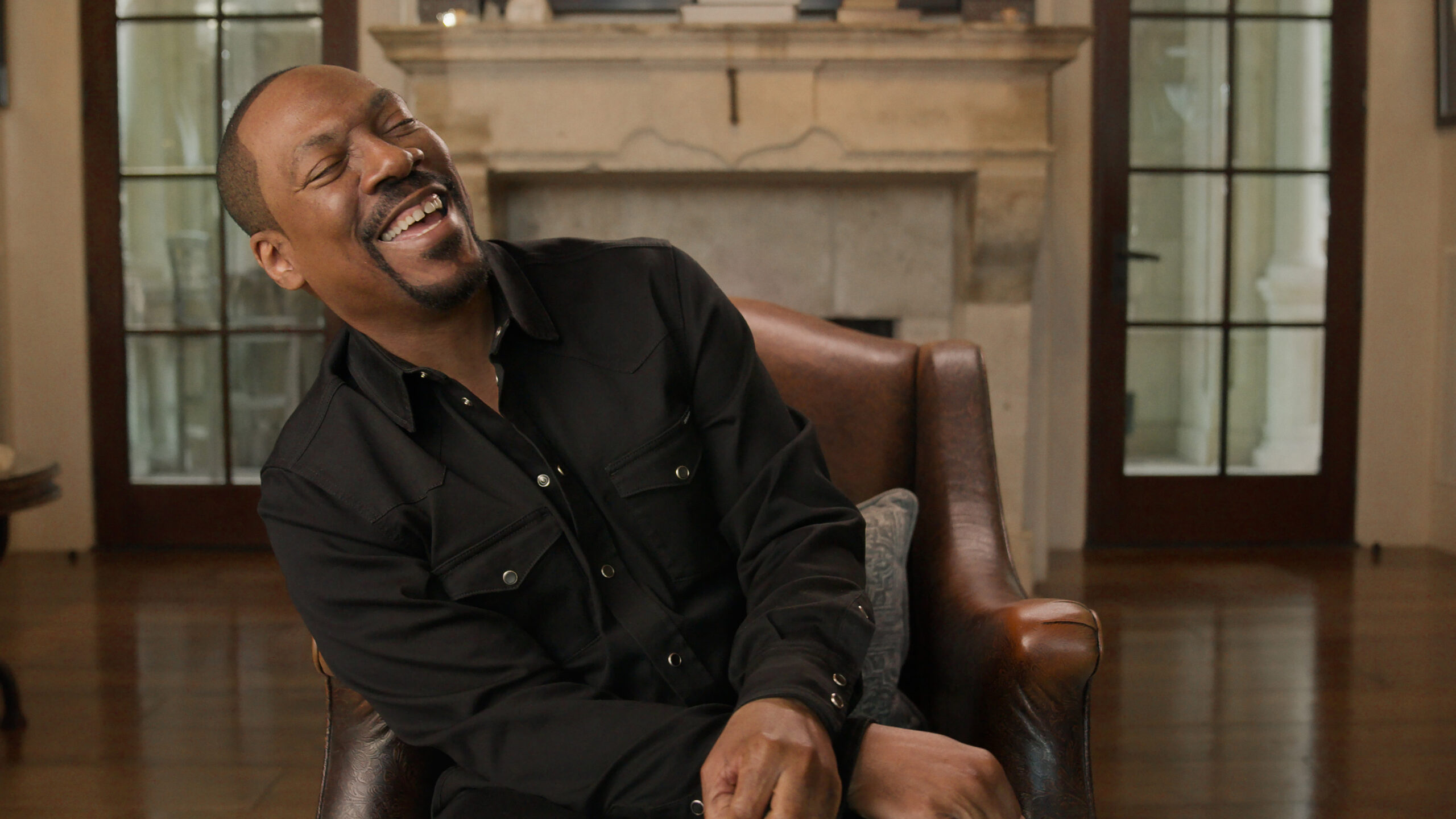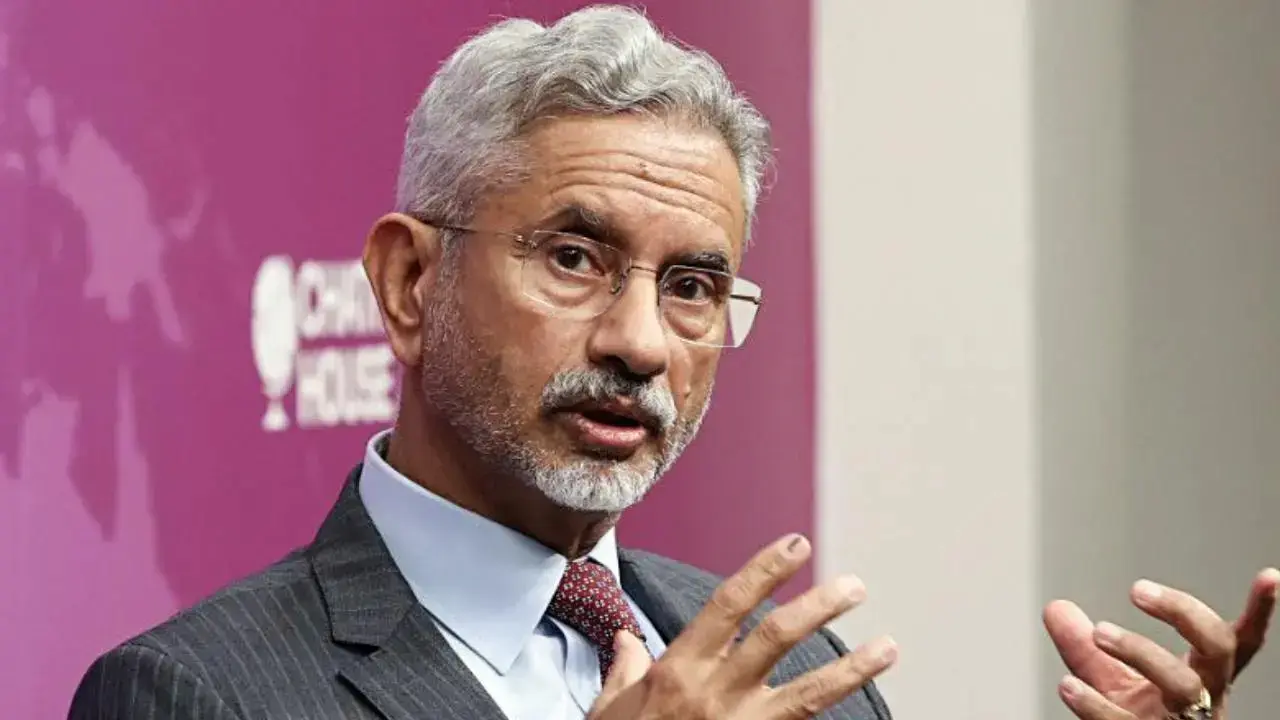Eddie Murphy, as he has always been the first to acknowledge, is the rare comedian who set out to model himself on rock ‘n’ roll superstardom. He wanted to be Richard Pryor, but he also wanted to be Elvis. That’s why, in his two legendary stand-up performances of the 1980s, the HBO special “Eddie Murphy Delirious” and “Eddie Murphy Raw” (the 1987 concert movie that’s still the highest-grossing comedy concert film ever released), he strutted around in leather suits a red one open to the waist in “Delirious,” a paisley blue one in “Raw” that showcased him as the sexiest stand-up comedian the world had ever known. In “Being Eddie,” the engaging if also relentlessly upbeat and manicured documentary portrait of Murphy that’s now showing on Netflix, Jerry Seinfeld makes the point that comedians aren’t really known for being good-looking. But in the ’80s, Murphy, with his sleek swagger and bedroom eyes, was the comedian as rock-star pin-up, and that smolder of glamour was built into the effrontery of his act. He was like a Richard Pryor who wasn’t sitting on a powder keg of anxiety. He was bold, insolent, cathartically hilarious. His other role model was Muhammad Ali, and the way Murphy explains it in “Being Eddie” is that he, Oprah Winfrey, Barack Obama, and Michael Jordan were “the first generation of Black overachievers, the first fearless ones,” adding, “I think that’s what we got from Ali.” Pryor, Elvis, Ali: That’s quite a legacy to build yourself on. And Murphy, for a few years there, was such a cathartic god of comedy that he became the next figure in that line. In the Reagan era, he could do no wrong, which is why it didn’t even matter that “Beverly Hills Cop” was, at heart, a serviceable, ramshackle vehicle that worked because Murphy all but hijacked the movie. His in-your-face, fastest-mouth-in-the-West presence was ahead of everyone, ahead of the whole culture. He talked and talked and talked, and audiences were electrified. Pryor had been a revolutionary talent (and let’s be clear: he was a genius), but Murphy was revolutionary too. We hear eloquent testimonials from Dave Chappelle and Chris Rock about how Murphy, even more than Pryor, redefined the power of what a Black movie star could be. The first half of “Being Eddie” is very satisfying, because in telling the story of Murphy’s rise it invites us to revel in what a magical performer he was. Every detail is fascinating the way he grew up in an all-Black neighborhood of Roosevelt, Long Island, fixated, from the age of 13, on the destiny of his future fame (“That was my mantra. And I really, really, really, really believed it with every fiber”), not just idolizing Pryor but channeling him, becoming a stand-up comedian in his teens, then landing on “Saturday Night Live” just out of high school, when he was only 19, in what turned out to be the most unlikely opportune moment. He started there in 1980-81, the first season after the original cast members had left, and Lorne Michaels along with them. It was a new show, with Jean Douminian in charge, and audiences resented it; they wanted their Dan and Gilda and Bill and Laraine back. The new edition was something of a washout, but Murphy busted through the mediocrity because everything he did was so outrageous and alive that it was undeniable. I can still remember how you’d wait for Murphy to show up, seeing what he would dare to do next: Mr. Robinson’s Neighborhood, Gumby, Velvet Jones, his X-ray impersonations of Bill Cosby and Mr. T and Stevie Wonder, and the recurring sketch that cemented his rock-star status, James Brown’s Celebrity Hot Tub, because apart from how funny it was it’s as if he had become James Brown, in all his big-bad-dog charisma. In “Being Eddie,” Jamie Foxx captures something about Murphy when he recalls “seein’ Eddie on ‘SNL’. skinny. That’s when comics are most lethal, when we’re skinny. When we ain’t had no food, we ain’t even ate yet. He’s just skinny and funny as fuck.” Murphy built on that authority in his first movie, “48 HRS.” (1982), which came together because Jeffrey Katzenberg saw his talent and rolled out the carpet for him. Yet he was nearly fired during the first weeks of filming. By the standards of corrupt Hollywood thinking, Murphy was playing “the Black sidekick,” but he never got that memo. Somehow, he took over the movie (from Nick Nolte at his most shaggy-gruff forceful), and in the bar scene he did nothing less than rewrite the rules of what a Black actor could be. Brandishing a stiletto, he comes up to a white stooge and says, “You know what I am? I’m your worst fuckin’ nightmare, man. I’m a n– with a badge. That mean I got the mission to kick your fuckin’ ass whenever I feel like it.” He says it like he means it. It’s as if all the power of the rising energy of hip-hop was compressed into that one game-changing, American-paradigm-shifting speech. And. he was funny as fuck. The Eddie Murphy we see in “Being Eddie” views that whole period with a Zen detachment that’s compelling. I’m used to thinking of Murphy as compulsively private, to the point that he could get prickly with interviewers. But in “Being Eddie,” seated alone in the living room of the beautiful mansion he built in Los Angeles, he speaks with an expansive ease, and a directness, that has a captivating surface candor. At 64, he’s still lean lean and youthful, maybe one result of the fact that he shunned cocaine (as in the first time he went out on the town with John Belushi and Robin Williams, and they laid lines on the table, which he refused), never drank, and tended to sit quietly in the back of parties nursing a Coca-Cola. Was the rock ‘n’ roll spiritual-son-of-Richard Pryor comedy upstart actually shy? Some call him that. But maybe he was just sane. Yet the documentary, directed by Angus Wall, treats him with kid gloves and, bottom line, refuses to go near his personal peccadilloes (though he confesses to having OCD as a kid, which he says he cured in himself when he learned it was a mental illness), or really to get into his personal life at all. We learn that he has 10 children, and that he got divorced, but there’s no other mention of the woman he was married to for 23 years. The implication is that what Eddie Murphy became was a paterfamilias. And maybe he did. He speaks with reverence of how having children changes you. But the reason the movie feels a bit bubble-wrapped is that it goes through the paces of Murphy’s career, ticking off almost every key moment as a creative triumph. And while there’s no doubt that Murphy kept trying things, going with the flow of what he was offered, I still think there’s a mystery at the heart of Eddie Murphy’s career that the film doesn’t touch, and that is this: Why did he draw back? Why did the Eddie Murphy who had positively ruled in the ’80s end up taking a back seat to a Murphy who was a far more complacent talent? Part of it is that you can only by the young Elvis once. Murphy, as the critic Elvis Mitchell argues in the documentary, didn’t just change comedy he changed the world. And once you’ve done that you likely can’t exert that revolutionary magic again. But Murphy’s description of why he never did stand-up after “Raw” feels lame. He says that when he would go to comedy clubs to try out bits, the unfinished routines would be reported on in the gossip columns, which he hated. Maybe that’s true, but you want to go: So what? That didn’t stop Pryor or Robin Williams or Seinfeld. Murphy could, and should, have continued to work in the awesome medium that is stand-up not every year, but at least once or twice more, going back to giving us the Eddie Murphy vision of the state of the world. (He could still do it now.) Early in the documentary, Murphy says he can’t think of another actor who has done as many types of roles as he has. Normally, that observation would be made by someone who’s not the subject of the film. But what it reveals is that Murphy thinks of himself as the ultimate chameleon, factoring in the multiple roles he has played under pounds of prosthetics in films like “Coming to America” and “The Nutty Professor” and “Norbit.” There’s no question that a few of those roles are gems (the old Jewish man in “Coming to America,” the whole family of Klumps). Evaluated not as comedy but simply as acting, those bite-size performances are rather amazing. (It’s one of the reasons I’d passionately hoped, 30 years ago, that Murphy would play Martin Luther King Jr. in a proposed Oliver Stone conspiracy biopic. He could have been brilliant.) And yes, he’s terrific in “Dreamgirls.” But the simple truth is that Eddie Murphy’s movies wound up losing their edge. He got his mojo back for “The Nutty Professor” (which was 30 years ago), and also for “Shrek” (five years later), but in the vast majority of films I’ve seen him in since, I often get the feeling that I’m watching an Eddie Murphy replicant an actor doing an impersonation of his earlier state of being. In the ’80s, when he wasn’t faking it, a simple talk-show appearance of his (we’re shown several of them) could be mesmerizing. I think what changed is that he became the cautious guardian of his brand. Maybe what was going on behind that façade is that he’d become a family man, and that’s where he was putting his passion. But even as he sustained his comedy career, doing “family movies” like “Dr. Doolittle” and “Daddy Day Care,” he ceased to be the blissful renegade he once was. “Being Eddie” reminds us that Eddie Murphy, back when he was changing the world, was a true comedy artist. The movie tries to bring his career full circle by devoting too much time to his 2019 hosting of “Saturday Night Live,” as if that was an epochal event. And more than anything, Murphy seems happy now, a man who has transcended his demons. In “Being Eddie,” you get a contact high off his well-being, but you may wish that a few of those demons would come back.
https://variety.com/2025/film/reviews/being-eddie-review-eddie-murphy-1236585061/
‘Being Eddie’ Review: A Netflix Documentary Engagingly Explores the Life and Career of Eddie Murphy, but It’s Too Upbeat to Get the Full Story




